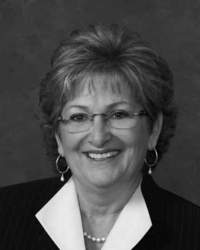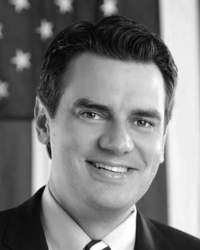Congressional rookies following the ways of Washington
 |
 |
 |
In 2010, voters were so determined to upset the Washington establishment that they elected a House of Representatives in which 20 percent of the faces were new. It was a political revolution. But nearly two years later, the 89 rookies elected in November, 2010—80 Republicans and nine Democrats—don’t look all that different from their more veteran colleagues.
It wasn’t long after they arrived in Washington in January 2011 before some of the newbies began mimicking their seniors in hitting the party trail, holding fundraisers to cover their 2010 campaign debts. Since then these corporate special interests and businesses registered to lobby have doubled down on their campaign donation to the first-year House members.
While many of the freshmen cultivated an image as political outsiders, an analysis of the paper trail they have left since their election shows that they are not all that different from other members of the Congress: More than half have previous experience in elective office and a disproportionate number of them appear to be millionaires based on their personal financial disclosure forms. And since taking office, they have been cozying up to the same special interests as the more seasoned members. All but seven freshmen are beholden to political action committees of businesses that lobby for at least 10 percent of their campaign receipts, and 55 freshmen have seen outside groups spending money on their reelection race.
A Reporting Group analysis of Federal Election Commission reports from the 2010 and 2012 cycle shows that:
- In 2010, political action committees of businesses that lobby gave the then-challengers a total of $14.89 million. Since then, they have upped their contributions to the first terms by nearly 100 percent, donating more than $26.66 million so far this cycle.
- Leadership PACs—political action committees associated with high-ranking present or former members of Congress—have propped up some of the candidates to the tune of $9.59 million.
- Outside groups—super PACs, nonprofits, labor groups and party committees—have spent $1.78 million so far on races where these 89 incumbents are running.
In 2010, the members of the House freshman class collected $144 million in campaign donations. So far this cycle, they’ve raked in $120 million, more than twice what they had raised at this point in 2010 ($54.6 million) and are heading into the most lucrative months of the fundraising calendar. As with veteran members of Congress, the members getting the most attention from big donors were those with important committee assignments.
Read more:
One case in point—which illustrates how much many of the freshmen resumes belie their maverick image—Rep. Diane Black, R-Tenn. Though Black touts her background as a “small business owner” and “registered nurse” as giving her “a unique perspective on Washington,” she is the richest member of the freshman class with an apparent net worth of about $49 million, according to an analysis by the Center for Responsive Politics, buoyed by her husband’s forensic science company. Black is also a political veteran, having been elected to the Tennessee House in 1998 and then to the Senate in 2004. Her experience also got her a coveted seats on two of the Capitol Hill’s most powerful panels: the Ways and Means Committee, the panel taxed with writing tax laws—including those that fund Medicare and Medicaid—and the House Budget Committee.
As a member of the key committees, Black has attracted donors from the healthcare industry, hospitals and insurance companies and ranks sixth among the freshmen class in terms of contributions from business PACs. In all, she has received a total of $566,000 so far in 2012 from PACs, compared to $250,000 two years ago.
In addition, a number of freshmen are relying heavily on contributions from businesses that lobby. Among the top 10, in terms of percentage of campaign contributions from businesses that lobby: Rep. Tim Scott, R-S.C., the president of the freshman class. Elected with heavy tea party support, he received 27% more from businesses that lobby so far in this cycle than in 2010.
Also attracting donations from business is another freshman with a political past. Rep. Cory Gardner, R-Colo., has received more than $316,000 from oil interests, among the top industry contributors to his campaign. Lately, Gardner, has been pushing the White House to approve the Keystone XL pipeline, which proponents claim, will bring some 20,000 jobs to Colorado.
While companies historically tend to put their money on incumbents rather than challengers, the giving patterns to House freshmen underscore the benefits of the incumbency that they now enjoy.
Honeywell’s company PAC, for example, multiplied its giving to some members of the freshmen class this cycle by as much as five times. In all, the company has contributed more than $2.35 million to House, Senate and presidential candidates this cycle, but more than a quarter of that money—$665,310— has gone to House freshmen. Black is one of Honeywell’s top recipients, along with fellow freshmen Reps. Scott Rigell, R-Va., Joe Walsh, R-Ill., and David Schweikert, R-Ariz.
An energy company and major defense contractor, Honeywell has spent some $3.35 million lobbying on defense contracting and other issues, in a year where big contractors are wary of the huge budget cuts coming their way if Congress is unable to agree on a budget plan and the across-the-board cuts ordered by the “sequestration” plan take effect.
Other major PACs that gave big to the freshmen class include the National Beer Wholesalers Association with $499,000—about a third of their total giving—and the American Bankers Association with $446,000.
The banking PAC, which represents major banks and credit card companies and is a voice of the financial sector, spent some $4.8 million this year alone on lobbying Congress and regulatory agencies on Dodd-Frank regulations, especially on credit default swaps and credit derivatives, the financial instruments that some experts blame for the near meltdown of the nation’s financial system in 2008 and 2009. Black, who got $12,000 from the bankers, is one of several freshmen benefiting from major contributions. Others include Reps. Lou Barletta, R-Pa.,($13,000) and Frank Guinta, R-N.H., ($11,000).
A quick turnabout and a focus on fundraising
Once the election battles were won and the class was sworn in January, the anti-insider, anti-special interest rhetoric soon collided with the reality of the hangovers from expensive campaigns. Some of the members with campaign accounts in the red had to quickly pay off their debt and began hosting or appearing at fundraisers with other more established members of Congress.
A quick look at Sunlight’s Party Time database, which collects invitations to political fundraisers, shows that there have been at least 448 fundraisers planned on behalf of 57 of the freshmen members in the last two years. This is only the number of fundraiser invites the site has collected, and is likely only a fraction of those actually held.
Rep. Kevin Yoder, R-Kan., is one of the newbies most frequently showing up on Party Time. Hardly a political novice—Yoder served eight years in his state’s legislature before winning election to Congress—the rookie managed to bag a seat on the powerful House Appropriations Committee. He’s had fundraisers hosted by a number of lobbyists, including Mark Valente and Erin Book, who represent pharmaceutical companies. Yoder also has received contributions from oil and gas interests.
During his first term in the House, Yoder has supported bills against regulation of greenhouse gases and to repeal a tax on medical devices. The $20 billion tax on medical devices that was written into the healthcare law is based on an excise tax levied on a company starting in 2013 and many companies fear the tax will be depleted or completely eat up their profits and is hence controversial.
Yoder is another freshman whose career defies the class’ outsider image. He went directly from law school into politics, serving eight years in the Kansas legislature before winning election to Congress. His chief of staff is a former biotech lobbyist. Already in his first term, he has launched a leadership PAC-.
While they have done fine with businesses that lobby Congress, the freshmen have received only a total of $109,187 from registered lobbyists. Leading the list: Rep. Hansen Clarke, D-Mich., who got $12,500 from lobbyists of Ford Motor Company and $15,192 from lobbyists for General Motors. The contributions didn’t help Clarke, however, who lost an August primary to fellow Democrat Gary Peters. The two were paired against each other when Michigan lost a House seat in redistricting.
Ranking members back up the newbies
In their effort to balance their campaign accounts soon after being elected, some freshmen got support of leaders of their party establishment. Rep. Martha Roby, R-Ala., for instance has received about 10% of her campaign cash from leadership PACs, followed by Rep. Dan Benishek, R-Mich., and a few others at 8%. For both Roby and Benishek, leadership PACs are the number one industry group giving to them. They’ve received money from Eric PAC, the leadership PAC of House Majority Leader Eric Cantor, and the Republican Leadership Committee.
Rep. Dan Benishek, R-Mich., got the most among various groups with $214,000 from these PACs in 2012 and $148,400 in 2010, the largest percentage of his total takings comes from other leadership PACs. Benishek won a seat occupied for 18 years by Bart Stupak, a conservative Democrat. Stupak became a GOP target after casting a key vote to pass President Obama’s health care law and opted not to run for reelection in 2010.
This year, the district is considered a toss up, according to the non-partisan Cook Political Report. GOP candidate for veep in 2010, Sarah Palin, also threw her weight behind Benishek in October 2010, and his background as a doctor helped him as a critique of the universal healthcare plan.
Outside groups spending big in the tight races
Freshmen have been magnets for outside spending this year. Super PACs and other independent groups have poured money into a number of races featuring House freshmen, in some cases to support the rookies and in other cases to submarine them. These groups have spent some money on tight races where a few freshmen are running.
Freshman Rep. Adam Kinzinger, R-Ill., faced a tough redistricting matchup against veteran House member Don Manzullo, a contest that drew some $429,000 from outside groups. The spending spree on ad buys was lopsided and came mostly supporting Kinzinger with the Campaign for Primary Accountability spending more than $224,000 running ads opposing Manzullo while Freedomworks spent a measly $4,800 supporting him. In all, outside groups have spent $3.18 million on the various races featuring one of 90 freshmen.
Campaign for Primary Accountability’s ad buys also got Kizinger into some controversy when Eric Cantor’s leadership PAC donated $25,000 to them, five times more than the amount that leadership PACs are allowed to contribute.
The trend of super PACs and the outside groups being the ones responsible for airing rough edged campaign negative attack ads appears to continue with most of the money coming from the left leaning groups. The House Majority PAC, which aims to reclaim the House for the Democrats has spent $576,000 so far on races where freshmen are running followed by the DCCC ($524,776) and the Republican leaning super PAC American Crossroads. ($400,487).
(Graphic by Kevin Koehler; Photo credits: U.S. House of Representatives)

